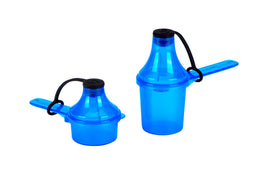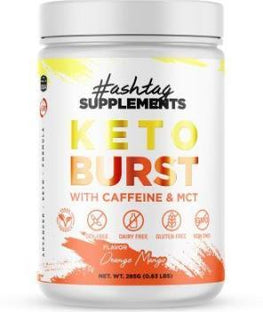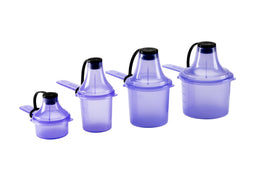CRYOTHERAPY IS THE HOT – ER, COLD – NEW ANSWER TO TRAINING RECOVERY

World Cup star Cristiano Ronaldo is doing it. So are Jessica Biel and Justin Timberlake - and Jennifer Anniston, Tony Robbins and Lebron James.
What is it? It’s cryotherapy – the use of ultra-cold temperatures on the whole body for benefits such as reduced pain and swelling, quicker recovery times between training sessions and less delayed-onset muscle soreness and spasms.
Sure, we all know an ice pack helps stop pain and swelling. And we’ve all seen the clips of pro athletes in ice baths. But now people – especially those who work out intensely on a regular basis - are turning to special cryotherapy chambers that spew out super-cooled nitrogen as cold as -270 degrees Fahrenheit.
Proponents say cryotherapy sessions take less time than applying ice or full immersion in an ice bath, aren’t as exhausting, and allow people to return to activity the same day. Cryotherapy is also said to have other positive effects on the body, like increased collagen production, a metabolism boost and even better management over obesity and metabolic diseases like type 2 diabetes.
Plus – you get a super rush for a few hours.
“It makes you feel really alive afterward,” says 38-year-old Al Katawazi of Gilbert, Arizona. However, he notes, “it was cold as hell. It’s comparable to jumping into a really cold pool.”
Does it really work – and how?
Recent cryotherapy studies have yielded proof of the benefits of whole-body cryotherapy.
First of all, it has long been documented that cold stops the conductivity of nerve signals, creating that numbing effect that takes away pain. It also constricts blood vessels, which reduce swelling – also reducing pain. This is the idea behind putting ice on an injury.
But ice baths and cryotherapy apply very low temperatures to the whole body, telling it it’s freezing and triggering a survival response. The nervous system sends out a system-wide message telling the body to constrict all blood vessels. As a result, blood gets pulled from the periphery of the body to the vital organs, undergoing a detoxification process that also increases its oxygen and nutrients. The idea is to give the organs get the most oxygen and nutrients they can to survive.
When tissues re-warm, the brain then sends a system-wide message to return the ultra-nutricious blood around the organs back out to its peripheral systems, which then in turn supplies the entire body with blood that is high in oxygen, nutrients, collagen, endorphins and other good stuff (collagen, in fact, is produced at an accelerated rate during cryotherapy).
Cryotherapy chambers supposedly offer all the benefits of whole-body cold treatment without any of the drawbacks.
Twenty minutes into an ice bath, for instance, soft tissue and muscle deep in the body begin to freeze and lose their capacity. Meanwhile, the body is faced with the unrelenting process of warming the blood in the body’s core back to normal. This takes an immense amount of energy and, if not done right, hypothermia and death can result. After the ice bath, a certain amount of time is then needed for the muscles to return to full function. So an individual must rest and cannot return to activity until the next day at the earliest. In an ice bath, oxygen supply to the skin and surface tissue is also halted, which can trigger skin damage and disease if the procedure is repeated.
A cryotherapy chamber, in contrast, does not actually freeze the muscle tissue — your body’s nervous system just thinks it’s freezing and the same survival response occurs. After 3 to 5 minutes, the cold therapy stops and the nervous system immediately senses a return to normal temperatures. The person can return to activity the same day with more energy and ability than before the treatment.
Take the proper precautions
Just because cold has some health and fitness benefits doesn’t mean it’s a DIY kind of thing you can do at home. Sitting too long in a cold bath may cause you problems with your internal organs and a large drop in blood pressure.
That’s why ice baths are usually conducted with supervision and participants often wear protective gear like neoprene pants, wetsuit booties, winter hats and fleece vests.
An ice bath, by the way, should be limited to 6 to 8 minutes – or, if you’re supervised and have experienced with ice baths, 10 minutes tops.
Afterwards, you also need to allow your body to re-warm. Five minutes of cold applied to skin, for instance, requires you wait at least 15 minutes after you remove the cold from your skin to be able to contract your muscles at the same speed again.
Precautions must be taken with cryotherapy chambers, too. A 24-year-old woman who worked at a cryohealth center in Las Vegas was found dead after using a cryo chamber at work. American sprinter Justin Gatlin went into one without dry socks and got frostbite on his feet. The same thing happened to two Missouri State men’s basketball players.
After his cryo-chamber treatment, Katawazi was even required to wait for his body to warm up and was shown a series of exercises to get the blood flowing again.
Remember, burning, aching and analgesia are typical sensations in response to cryotherapy. But any other sensation, except intense cold, should be carefully monitored. Make sure the cryotherapy facility you are using is state-licensed, that you wear protective gloves and socks, you only stay in the chamber for 2 to 3 minutes and that they have an oxygen monitor (the gaseous nitrogen creates an oxygen-depleted environment).









canadian pharmacy cialis